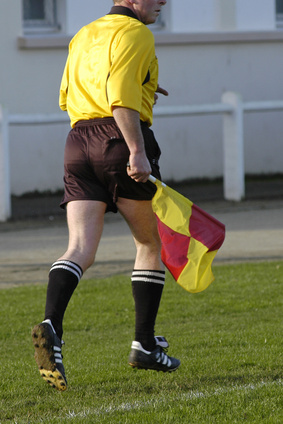
Overview
Refereeing soccer requires physical fitness, sharp awareness and a good deal of patience. To become a soccer referee, you should make a habit of watching and learning the game. In the United States, it is required that you become certified before taking control of a soccer game. A soccer referee must know the rules of the game and have the ability to concentrate for long periods.
Step 1Prepare thoroughly and develop a high level of physical fitness and stamina. The game forces you to run end-to-end in order to keep up with play. The ball moves at a high speed and falling behind the play can result in missed calls when you are not close enough to the action. It is important that you are in position to see the player on the ball directly--position yourself so no players are blocking your eye line to the ball. You must also have the required physical fitness to run during the game without being out of breath, as refereeing requires you to communicate with players and coaches throughout the game.
Step 2Avoid hesitation and make decisive decisions regarding foul play during a soccer game. You should communicate to players what the decision was, but do not need to enter an ongoing dialogue. Merely explain the decision and convey they need to accept it. Use your judgment as a soccer referee to give the appropriate punishment.
Step 3Do not tolerate abuse. If players or coaches are disrespectful to you, it is within your rights to give them a verbal warning or a yellow card. If during a game, a player or coach uses foul language or is confrontational, you are within your rights to give a red card and eject them from the soccer game. Report any incidents such as verbal or physical confrontation towards yourself to your referee assignor or by filing a report to your state association.
Step 4Award free kicks and cards when appropriate. Direct free kicks can be awarded for offenses including kicking or tripping an opponent, a deliberate handball and fouling or striking an opponent. If you believe a player has used excessive force when fouling, you should give a yellow card. If you believe a player has committed a dangerous foul, or a foul has denied a goal-scoring opportunity, you should give a red card.


